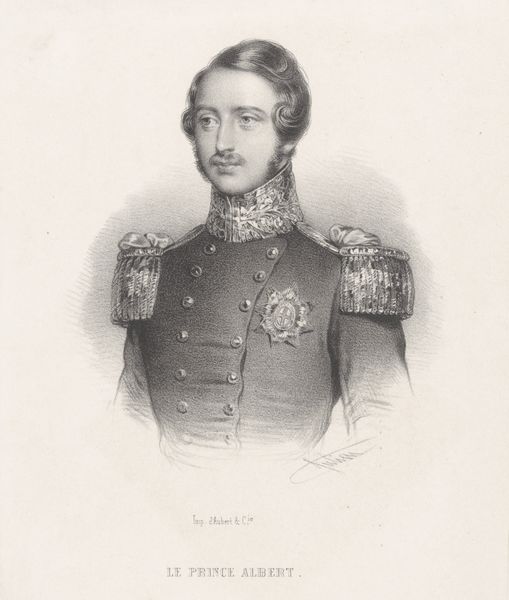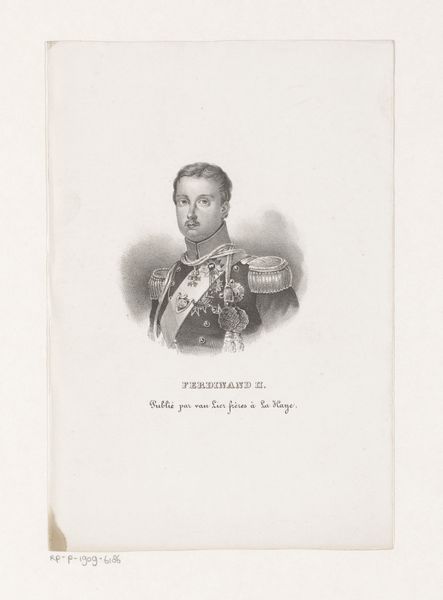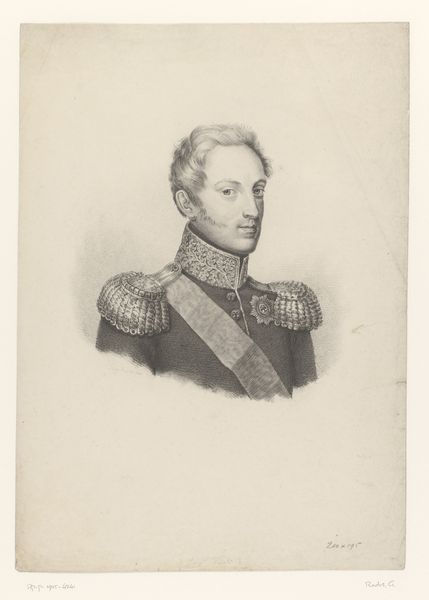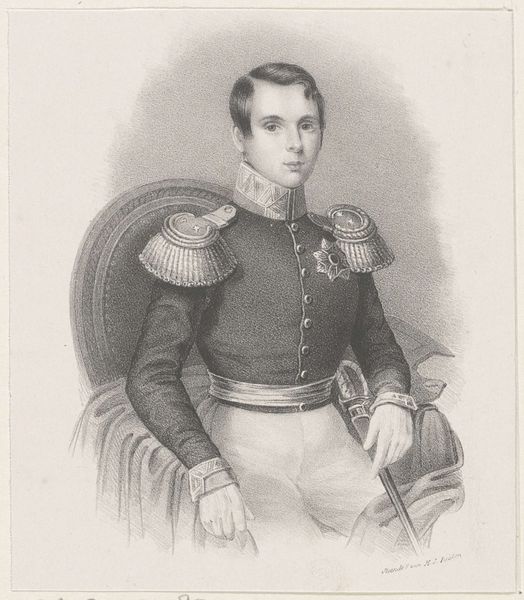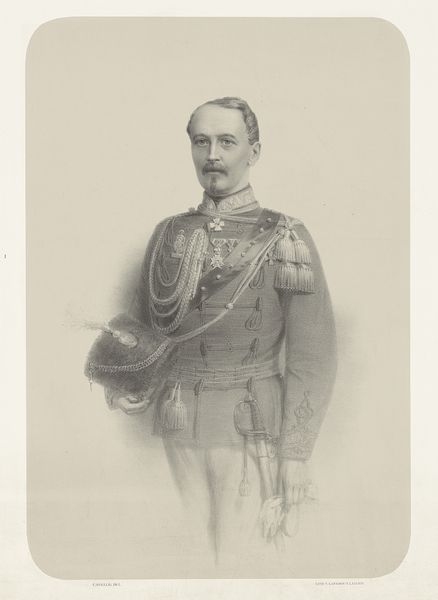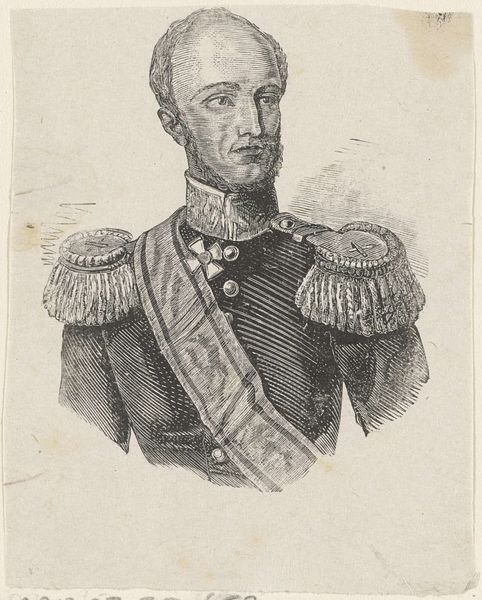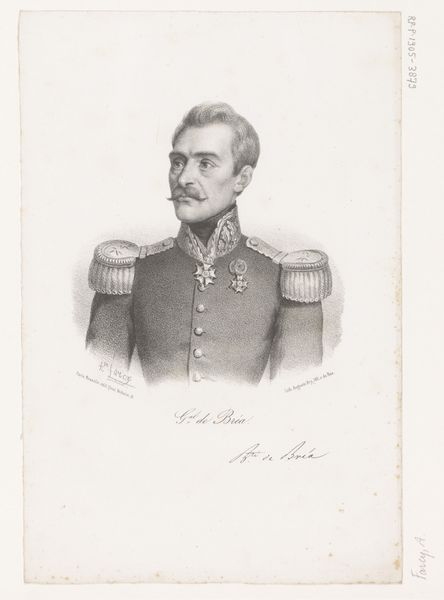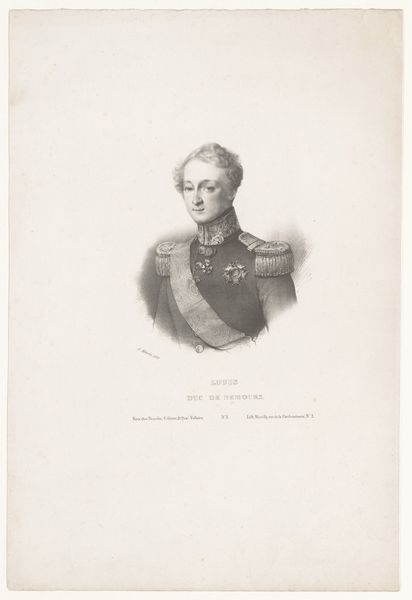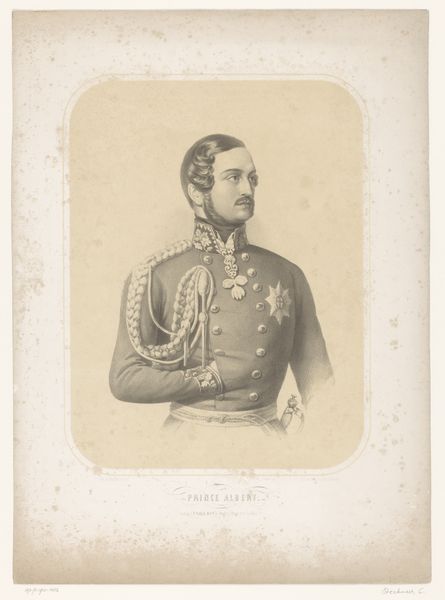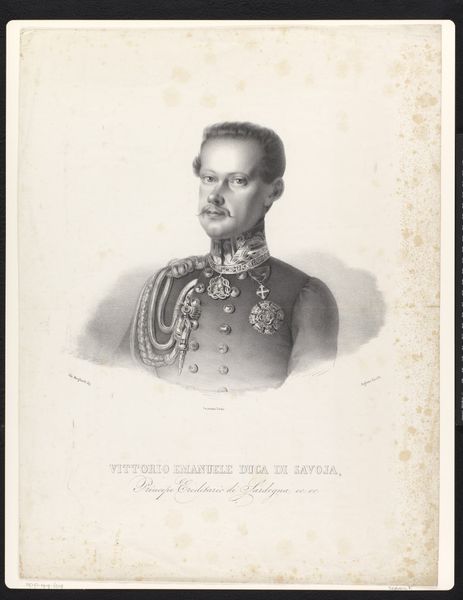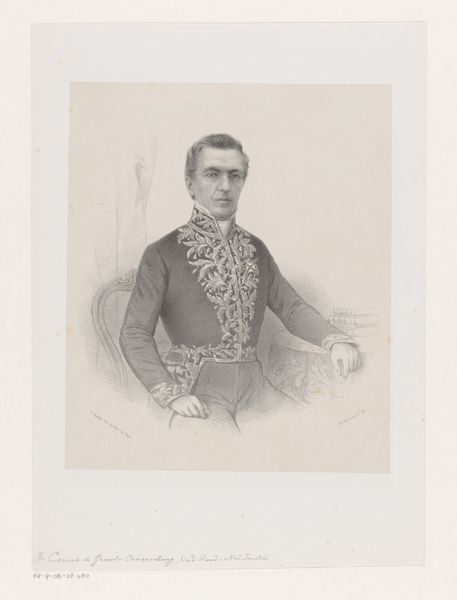
Portret van Koning Karel Albert van Sardinië 1842 - 1887
0:00
0:00
drawing, pencil
#
portrait
#
pencil drawn
#
drawing
#
pencil sketch
#
pencil drawing
#
pencil
#
history-painting
#
academic-art
#
realism
Dimensions: height 235 mm, width 140 mm
Copyright: Rijks Museum: Open Domain
Curator: Looking at this work, I am struck by its restrained elegance. The precision and detailing achieve something quite profound despite the limitations of the medium. Editor: This is a pencil drawing, now held in the Rijksmuseum, depicting King Charles Albert of Sardinia. It's attributed to Carel Christiaan Antony Last and dates from between 1842 and 1887. At first glance, it embodies 19th-century ideas around masculinity, power and legacy. But let’s consider the socio-political context. Curator: It’s interesting how the use of pencil seems to soften the edges of royalty. Instead of the grand, opulent depictions you might expect of a king, we have a study, almost as if caught in a moment of reflection, before all of the imperial trappings. The gaze holds a certain world-weariness, a burden of leadership, perhaps? Editor: Yes, and we have to remember Sardinia’s fraught history during this period. The Risorgimento was in full swing; Italian unification was being forged amidst conflict. A portrait, even a drawing like this one, had a specific purpose. How does the artist want him perceived amidst those struggles for autonomy? The meticulous detailing of his uniform and decorations all work to solidify an image of strength and legitimacy during an uncertain time for Italian sovereignty. Curator: And what is emphasized and what is downplayed reveals quite a bit. Last could have focused on a strong, stoic profile; instead, he offers us a frontal view, perhaps revealing an element of vulnerability alongside the regal display. I read a sense of responsibility in the meticulous execution, and the overall tonal register makes it a rather quiet affair for a monarch portrait. Editor: Absolutely, that quietness might reflect the shifting sands of power during the Italian Unification, revealing less about Charles Albert the individual, and more about his precarious position and attempts at controlling narratives of identity within that very specific socio-historical moment. In many ways it mirrors that feeling of looming change. Curator: Indeed. Perhaps a perfect example of art acting as both historical document and reflection on individual experience. Editor: It certainly is that. Thank you for adding even more layers for our visitors to consider.
Comments
No comments
Be the first to comment and join the conversation on the ultimate creative platform.
